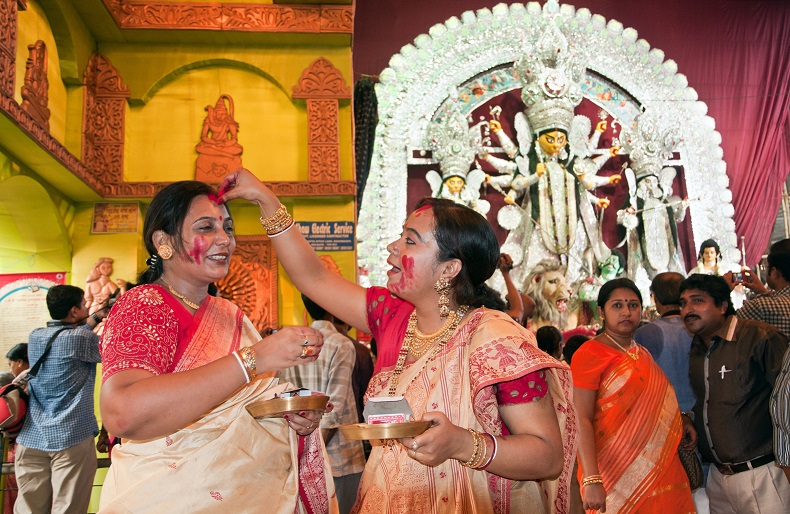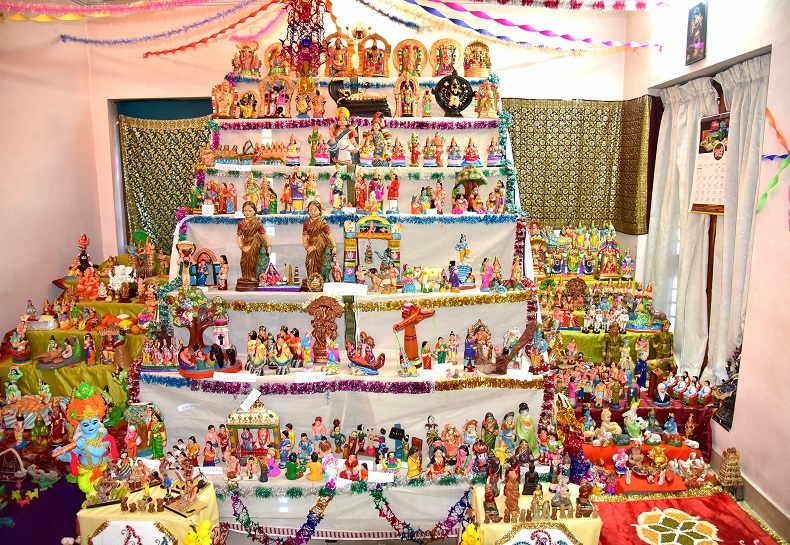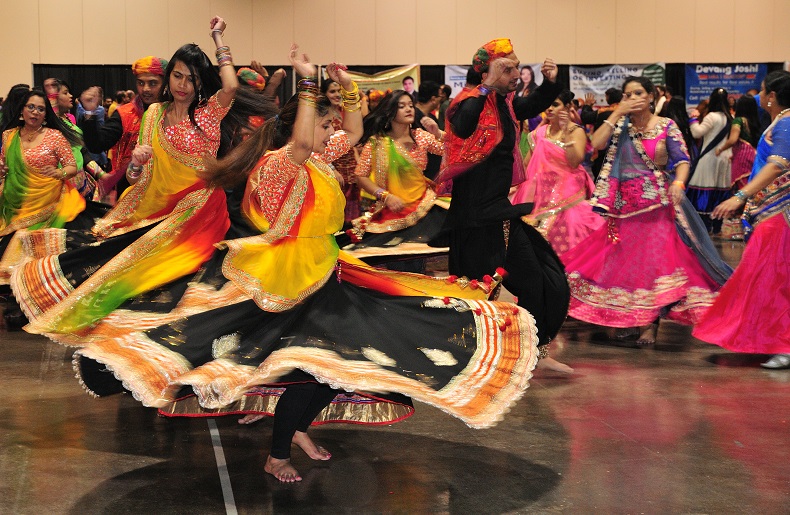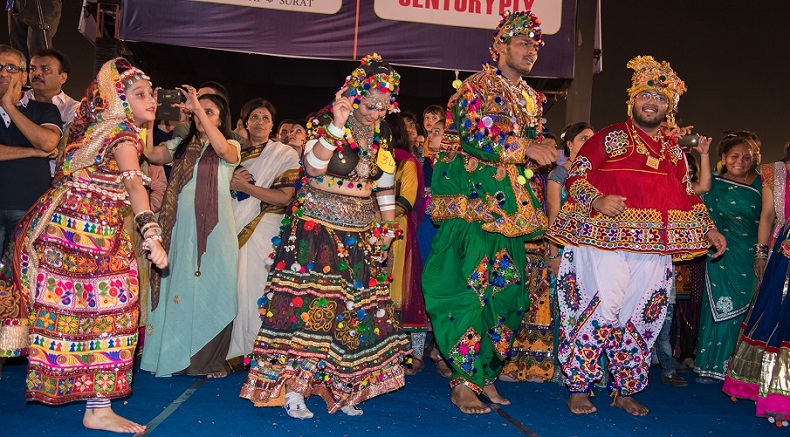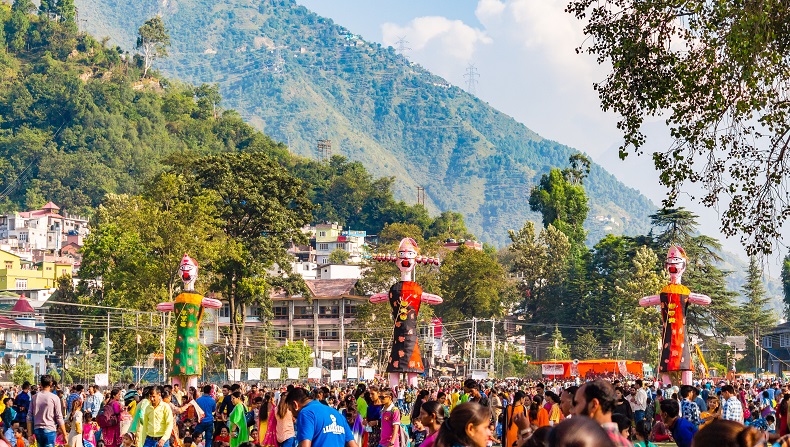How is Durga Puja Celebrated in Different parts of India
Good wishes of Durga Festival!
This is the time of the year when Goddess Durga visits her parents and the entire nation breaks into a festive fervour which is unseen elsewhere in the world at this scale. This festival symbolizes the victory of good over evil and this teaching is celebrated all over India in different states in different flavours. There are varied ways in which Ma Durga is worshiped. The rituals and customs differ due to a vast difference in the culture of Indian States but intrinsically, all these States follow the century-old tradition and practice that blend with historical ethos. Also known as Dusshera, it is celebrated with great pomp and show in West Bengal. It’s the biggest and most important occasion of the year there. Known as Durga Pujo in West Bengal, especially the last four days of the festivities reach a crescendo. Lifesize idols of Durga, mammoth pandals, splendid Arti, mild fragrance of the shiuli phool, the sound of the Dhak, Dhunuchi naach, women in their gorgeous saris and men in pyjama kurta tugs the heartstrings of every Bengali. Durga puja is performed on the Shashti, Saptami, Ashtami and Navami followed by a great Doshomi Puja held on the tenth day. Women offer Sindoor on the forehead of the goddess and on each other. Even in Assam and Orissa, it is celebrated in a similar fashion.
Golu Exhibition in South India
Known as Navratri, down South, it is celebrated a tad differently. Navratri is an occasion to invite friends, relatives and neighbours over to their homes, to look at the Kolu-an exhibition of various dolls and figurines decorated with different themes with a lot of enthusiasm among the women folk in Tamil Nadu. This Kolu exhibition prevails in all the south Indian states with different names like Bombe Habba in Karnataka, Bomma Gullu in Kerela, and Bommala Koluvu in Telugu. In the southern regions, Durga Puja signifies the beginning of formal education for every child aged 3-5 years. Ashtami is the day of Ayudya Puja when all the tools at home are worshiped. Custom dictates that no tools be used on this day. On Navami, Goddess Saraswati is honored by worshiping the books and records at home. Thousands throng the Saraswati temple at Kottayam, Kerela, during this period to take a dip in the mysterious holy pond whose source is yet unknown. Large gatherings are also seen at the famous temples at Thekkegram (Palghat), in which there are no idols — only huge mirrors. A devotee bows before his own reflection indicating that God is within us.
Dussehra in Mysore
Mysore’s Dushshera is world renowned, weaving a harmony between historical and religious culture. On this day, the entire city is decked up with flowers, diyas and light bulbs. Famed for its gala procession of richly bedecked elephants who walk down the brightly lit streets of the city on Dussehra. These caparisoned elephants lead this colorful procession through the already vibrantly decorated streets of the princely city of Mysore. Effigies of Ravana, Meghnath and Kumbhkaran are burnt. The resplendent Mysore palace is illuminated for a whole month during the festive season. On Vijayadashami day, Goddess Chamundeshwari is worshiped and then taken out in a grand procession on a Golden Ambari or elephant-mounted throne through the city of Mysore, commencing from the historical Mysore Palace to the Banni Mandapa.
Garba in Gujarat
If you are the kind who likes jubilance and gaiety, you should participate in the brilliantly colorful Navaratra in Gujarat, Dussehra is celebrated in the form of Navratra where the main attraction is the Garba, a folk dance of Gujarat which is played during the nine days of Navratra. Young and old would gather at one place and dance to the tune of folk songs, all through the night, after the Arti.
Nine days of Navratri in Maharashtra
In Maharashtra, Durga Puja is an occasion of fun. The flower garlands which are put on the deity during the Puja, are not removed the next day. After nine days all nine are removed together. Young girls, who have not yet come of age, are invited in the household where the Pujas are held, to dine, play traditional games and even dance and sing the distinctive folklores. Pictures of an elephant are drawn with powder colours and the girls are asked to play guessing games. All the nine days of the Navratri are dedicated to Goddess Durga and on the tenth day, Goddess Saraswati is worshipped. This day is considered auspicious to start anything new.
Fasting in Punjab
The boisterous Punjabis strictly observe Navratri. The traditional Punjabis go on a fast and their intake comprises of only milk for seven days before they break their fasts on Ashtami or Navami. They worship Durga Ma and the staple diet is mainly fruit or a complete meal once a day. Intoxicating drinks or meat and other forms of entertainment are completely avoided. At the end of the fast devotees feed beggars or worship little girls who represent the Shakti of the Mother Goddess.
Kullu Dussehra
Dussehra is a joyous event in Kullu which has a lot cultural significance. There is a zealous celebration in Kullu on the last day on the Dashmi., in the Dhalpur Maidan in the Kullu valley. Dussehra at Kullu commences on the tenth day of Vijayadashami day itself and continues for seven days, which has its root in the 17th century when the local ruler Shri Jagat Singh put up an idol of Raghunath atop his throne to signify his penance. Subsequently, God Raghunath evolved as the ruling deity of the Valley.
Puja celebration in Jammu and Kashmir
In Jammu and Kashmir, though Hindus are in minority but they celebrate Durga Puja with pomp and show. The favorite deities of Kashmir are Lord Shiva and Serawali Ma Durga, who rides the tiger. Though no magnificent pandals can be found here, each Hindu household does the pooja at home. Adults fast on water and eat fruits in the evenings. As elsewhere, Kashmiris grow barley in earthen pots. It is believed that if the growth in this pot is good, there is prosperity all year. The most important ritual for Kashmiri Pandits is to visit the temple of Goddess Kheer Bhawani on all nine days. On the last day of Navratri, an Arti is held at the temple after which people break their fast. On Dussehra day, Ravana’s effigy is burnt. Devotees also visit the Hari Parbat temple.
India is doing everything differently these days And so is Sterling Holidays: Holidaying differently. The way urban India is celebrating festivals is also transforming. Since festival time is all about fun and family: you can take a break during the approaching long weekend and book a package in any of our stunning properties of Sterling Resorts all over the country. We are present almost in all the states where Durga Puja revelry is on. Make the Pujas distinctly different this year and when you celebrate with us a little differently, we assure you to create everlasting memories!

